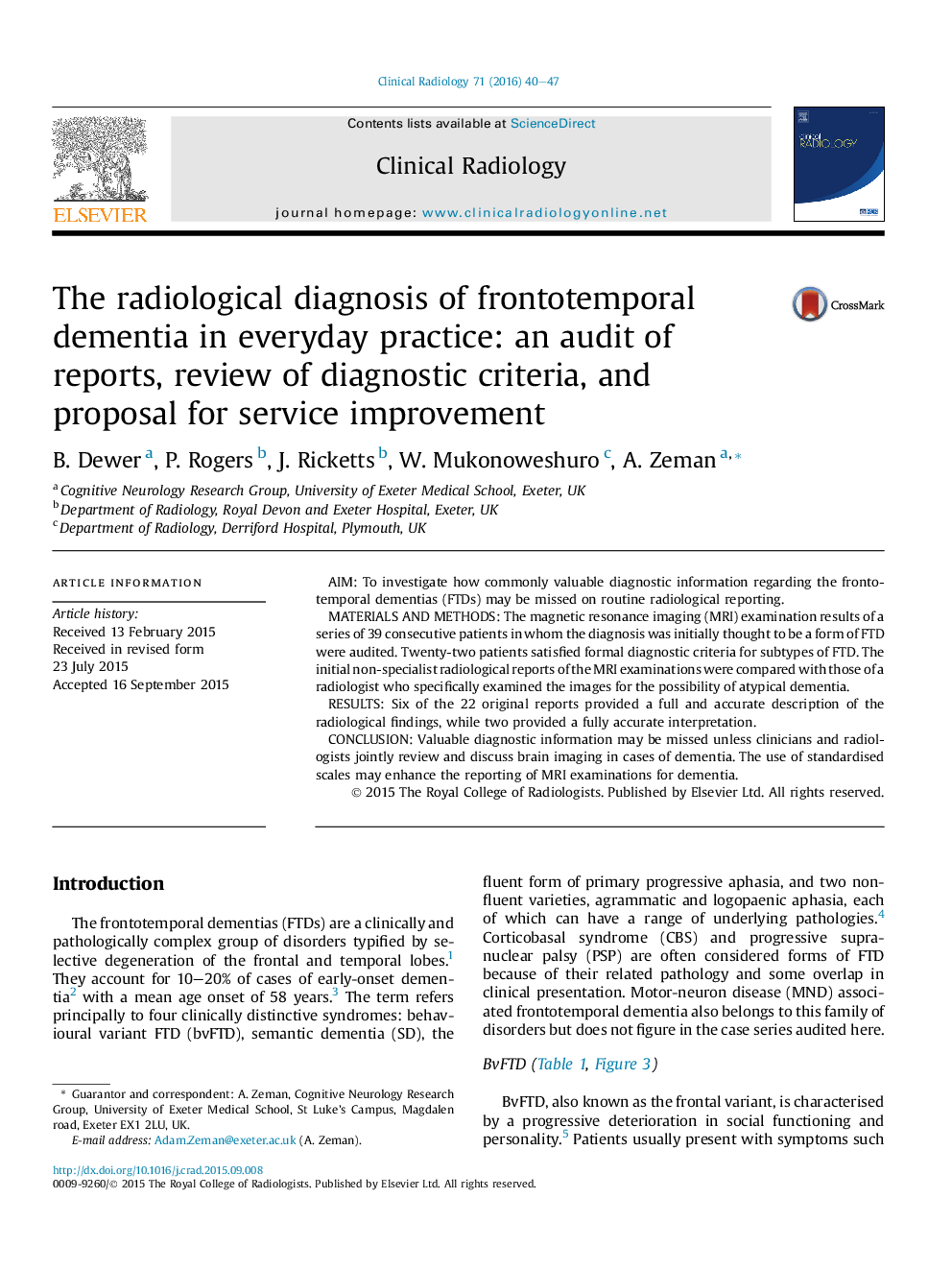| Article ID | Journal | Published Year | Pages | File Type |
|---|---|---|---|---|
| 3981435 | Clinical Radiology | 2016 | 8 Pages |
•Relevant MRI findings in dementia are often omitted from non-specialist reports.•6/22 reports provided full and accurate description of radiological findings.•2/22 reports provided full and accurate interpretation.•Multidisciplinary meetings between clinicians and radiologists are valuable.•The use of standardised scales may enhance the reporting of ‘dementia scans’.
AimTo investigate how commonly valuable diagnostic information regarding the frontotemporal dementias (FTDs) may be missed on routine radiological reporting.Materials and methodsThe magnetic resonance imaging (MRI) examination results of a series of 39 consecutive patients in whom the diagnosis was initially thought to be a form of FTD were audited. Twenty-two patients satisfied formal diagnostic criteria for subtypes of FTD. The initial non-specialist radiological reports of the MRI examinations were compared with those of a radiologist who specifically examined the images for the possibility of atypical dementia.ResultsSix of the 22 original reports provided a full and accurate description of the radiological findings, while two provided a fully accurate interpretation.ConclusionValuable diagnostic information may be missed unless clinicians and radiologists jointly review and discuss brain imaging in cases of dementia. The use of standardised scales may enhance the reporting of MRI examinations for dementia.
